OnePlus 8 Review
OnePlus 8 Review
OnePlus goes 5G
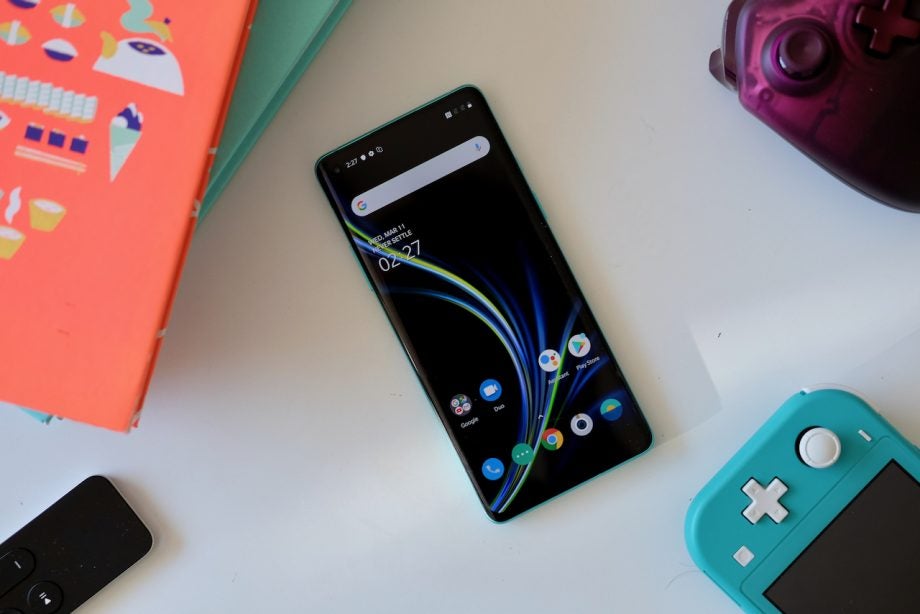
Verdict
OnePlus goes 5G. Improvements outside mobile internet aren't too dramatic, but this 5G transition is a smooth one.
Pros
- 5G with no massive price hike
- Top-end processor
- Rich, bright OLED screen
Cons
- Rubbish macro camera
- No optical zoom
- Still missing wireless charging and an IP rating
Key Specifications
- Review Price: £599.99
- 5G Qualcomm X55 modem
- Snapdragon 865 CPU
- 8/12GB RAM
- 128/256GB storage
- 6.55-inch 2400 x 1080 pixel OLED screen
- 4K/60 video
- 4300mAh battery
The OnePlus 8 is one of the first 5G phones you don’t have to pay a scary amount for. It is much less expensive than the OnePlus 7 Pro 5G from 2019, and one of the most affordable 5G phones around.
Yes, it costs £50 more than the OnePlus 7T, and the camera is arguably a downgrade. It is not perfect.
But OnePlus has done it yet again, making the right decisions to bring still-expensive 5G hardware to a £599 phone that can match several over £1000 in a few key respects.
Related: Best Android phone
Design – The OnePlus 8 looks like a high-end flagship
The OnePlus 8 is the most high-end design OnePlus has used to date for its “standard” phone.
A couple of times a year OnePlus makes a new Pro phone and a normal one, and the Pro variant usually looks and feels fancier.
This time, the two are closer. The OnePlus 8 has curved glass on the front and back just like the OnePlus 8 Pro. It is a significantly smaller phone too, but many, myself included, will find it more of a charmer as a result.
It’s easy to accidentally fire off touchscreen presses on large phones with curved sides, and micro screen surrounds. I haven’t found it a problem here, mainly if you use the supplied silicone case. It may spoil the look a little, but using it is a good idea.
Related: OnePlus 8 Pro vs OnePlus 8
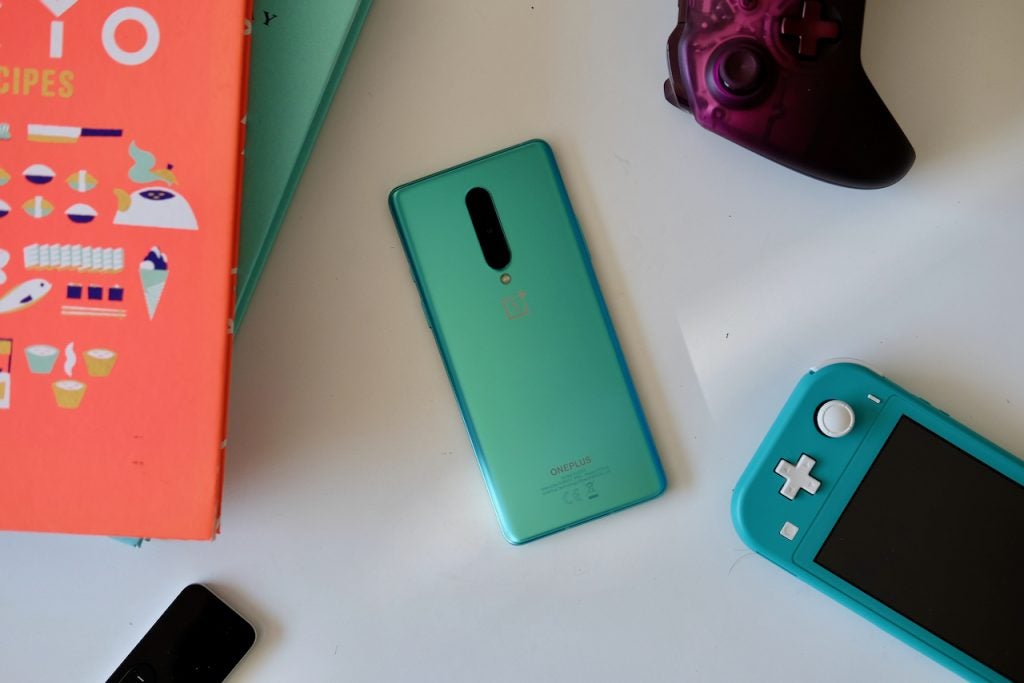
There are two OnePlus 8 colours in the UK, and the one you get depends entirely on the spec you pick. The lower-end phone with 8GB RAM and 128GB storage is a glossy black. OnePlus calls it Onyx Black.
The OnePlus 8 you see here is Glacial Green, a beautiful silky matt turquoise. This finish is only available in the higher-end 256GB storage, 12GB RAM spec. It’s far more eye-catching, but also a bit more expensive, of course.
Many of the usual OnePlus design traits remain. The OnePlus 8 has a handy silent mode slider on one side, there’s no headphone jack, and while the phone is somewhat splash-proof, there is no official water resistance rating.
To get IP68, a water resistance standard that says a phone can be submerged without damage, you need to buy the OnePlus 8 Pro.
There are stereo speakers. One sits above the screen, another on the phone’s bottom. They’re loud and cut through cooking noise and the shower pretty well.
Related: Best OnePlus 8 Deals
The OnePlus 8 also has an in-screen fingerprint scanner. It’s not quite as fast as that of the Oppo Find X2 Pro but is otherwise great. It works every time as long as your thumb isn’t sopping wet, and is better than the Samsung Galaxy S20 Ultra’s finger pad.
The OnePlus 8’s back looks a little less recognisable than the OnePlus 7T’s, though, because it uses a standard lozenge-shape camera housing rather than the big circle of the last generation. You’re less likely to be able to spot this OnePlus from 50 paces, but you could argue this plain style is classier than either the old circle or the great big rectangles of some of the most advanced phone cameras.
I have no major complains about the 8’s outside bits, much as I still miss the older OnePlus phones’ headphone jacks.
[videoai]Screen – There’s a hole, but the OnePlus 8’s screen is still impressive
OnePlus was one of the major proponents of motorised front cameras, starting with the OnePlus 7 Pro. When they arrived, I could already picture headlines of face unlock taking 10 seconds to work, and multi-million dollar recalls when the things failed three months in.
When I used one in the OnePlus 7 Pro, I was nothing but impressed. They were quick, and let you fill the whole screen with video.
OnePlus has now dumped the pop-up camera. The OnePlus 8 and OnePlus 8 Pro both have punch-hole cameras. They are small, and as they sit in one corner, are a bit less distracting than one sitting in the centre of the display’s top. But they are still kind of distracting when you watch full-screen video.
All the other big-name rivals, the Samsung Galaxy S20, iPhone 11, and Oppo Find X2 Pro, have some form of punch hole or notch. This is a reversion to the norm, not OnePlus falling behind.
The sheer prevalence of punch holes also likely makes them much cheaper for OnePlus to implement than a pop-up camera.
Whether you prefer a pop-up, punch hole or notch, the OnePlus 8 screen is otherwise excellent. It’s bright enough to be clear on a sunny day, the OLED panel’s contrast is superb, and colour is excellent.
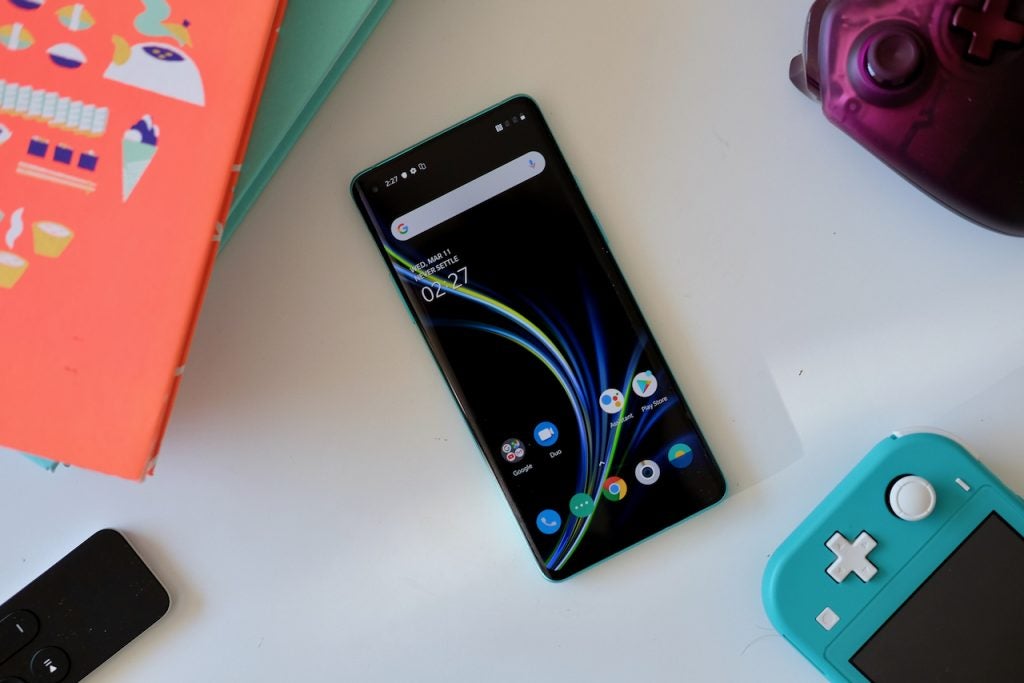
The OnePlus 8 uses a well-saturated “vivid” mode as standard. But if you head into the Settings menu, you can switch between the reserved sRGB and bolder DCI P3 colour standards. There’s even a Wide mode that pushes the colours beyond the relatively tasteful Vivid setting.
The display also supports HDR and is a 90Hz panel. This means it can refresh its image up to 90 times a second rather than the usual 60. It makes scrolling through Android look smoother. And unlike some other high refresh rate phones, the OnePlus 8 is not nerfed as standard. It uses 90Hz refresh rate and its native 2400 x 1080 pixel resolution.
An upgrade to the OnePlus 8 Pro nets you even higher resolution, 3120 x 1440 pixel resolution and 120Hz refresh rate. But in person, the difference is not all that stark. This is a great screen.
Software and performance – Similar to previous OnePlus phones, and that’s no bad thing
The OnePlus 8 runs Android 10 and the OxygenOS 10.5 interface. This is very similar to that used in the OnePlus 7T, and that’s no bad thing.
There are separate app menu and home screen areas, and the news feed home screen is Google’s. Oxygen OS’s look is its own, but it also offers a lot of significant tweaks just below the surface.
For example, you can change the shape of drop-down menu icons, switch to different icon design packs, and there’s not just a “dark” mode, but two light modes. One uses more colour than the other.
OnePlus may have taken a turn for the mainstream a couple of years ago, but the geek-friendly tweaks are still here.
The OnePlus 8 has the Snapdragon 865 CPU, the best you can get in an Android as of early-mid 2020. It’s an octa-core processor with three different flavours of Kryo core. It scores 3318 in Geekbench 5 (903 per core), beating the Samsung Galaxy S20 Ultra. Only the iPhone 11 Pro is ahead for performance at the time of review.
Storage is ultra-fast, and the 12GB version uses the latest LPDDR5 RAM – quicker than most. But the main point is that we get the Snapdragon 865’s powerful Adreno 650 graphics processor.
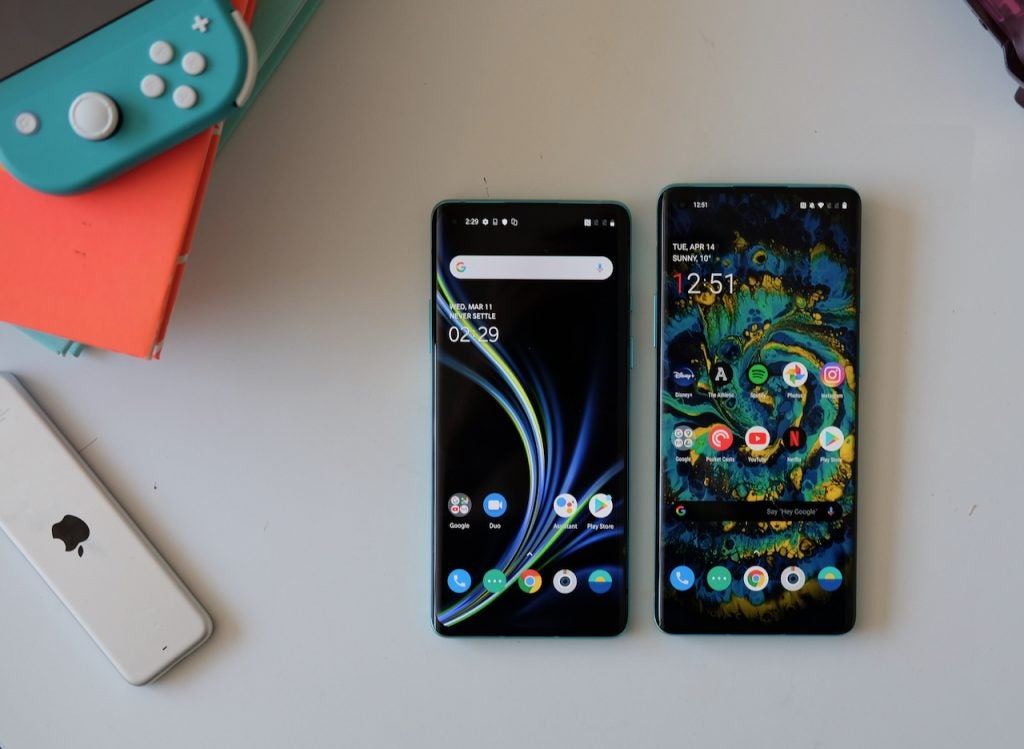
OnePlus 8 vs OnePlus 8 Pro
You are more likely to smash your OnePlus 8 or drown it in an unfortunate toilet incident before games start running slow on this thing.
The OnePlus 8 is also a 5G phone, an even more important part of its techy future-proofing. Even if you buy one with no intention of upgrading to a 5G contract, the option is there. This is a phone you’ll likely be able to carry on using for years. It’s another reason to use the case and keep your OnePlus 8 looking pretty for longer.
Camera – A good mid-range camera, and decent video
Several elements of the OnePlus 8 mark a levelling-up from the OnePlus 7T, like 5G and the curved front. But the camera hardware can seem like a downgrade.
The OnePlus 7T has a 48-megapixel Sony IMX586 primary sensor, a 16-megapixel Sony IMX481 for its ultra-wide camera and a basic 2-megapixel macro with a Galaxycore GC2375 sensor.
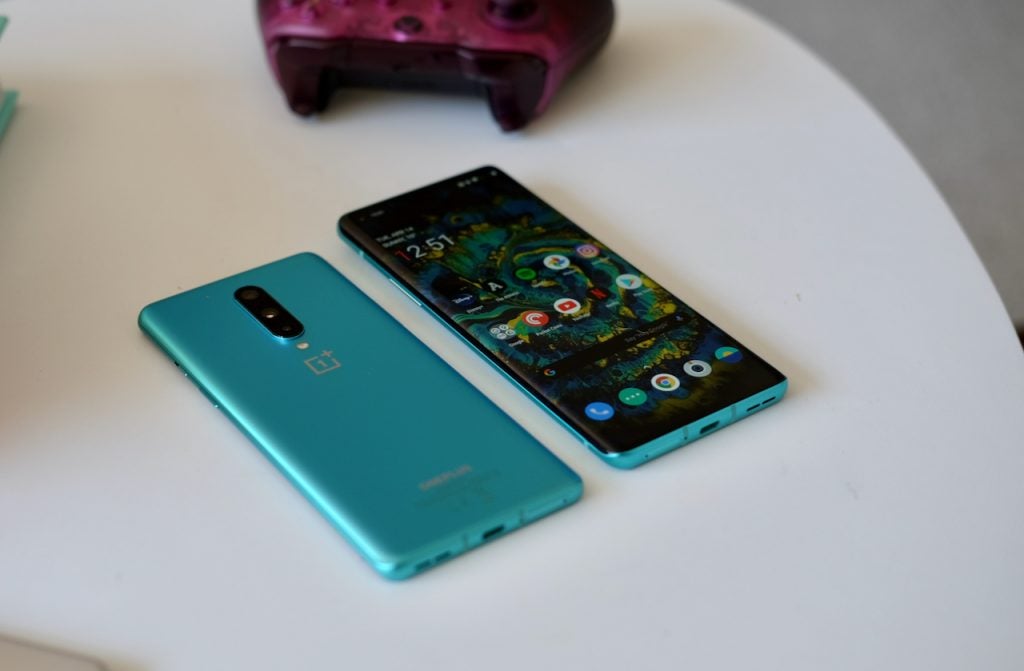
OnePlus 8 vs OnePlus 8 Pro
There is no zoom. When you use the 2X zoom mode in the camera app, it crops into the main camera’s view. 2019’s OnePlus 7T has an optical zoom camera, one far more useful than the low-end macro used here.
These also highlight the two significant differences between this phone and the OnePlus 8 Pro. The more expensive alternative has a “real” 3x zoom and much, much better macro ability, provided by the higher-quality ultra-wide camera. Its primary camera has a better sensor too.
No surprises: while the 2MP macro can focus up close, it does not capture nearly enough detail make your shots look like stills from a nature doc. You can usually get much better results using the 2X zoom instead, which uses something close to a cropped version of the main camera’s 48-megapixel feed.
Related: Best camera phone
Night photos are also a cut below the best. While there’s an effective low-light mode called Nightscape, which helps with brightness and dynamic range, there’s a softness to night shots that wipes some fine detail and texture.
The OnePlus 8 has a good mid-range camera, not an ultra-high-end one. However, when you take it our to shoot during the day, the gap between mid-range and high-end results narrows.
This phone has nice HDR processing, and the camera feels responsive, focusing is reasonably fast. And while I miss having a great zoom, particularly as I’ve used the Samsung Galaxy S20 Ultra and Oppo Find X2 Pro recently, the ultra-wide camera is a reasonably good one.
There’s no sudden and unmistakable drop in quality when you switch to the wide, beyond that you’d expect when stretching your field of view to 116 degrees.
The OnePlus 8 also has a Portrait mode, which blurs out the background. However, it’s pretty picky about the distance from your subject. Get too close or too far, and the blur simply won’t engage.
Here are some shots I took using the phone.


Macro mode: rubbish 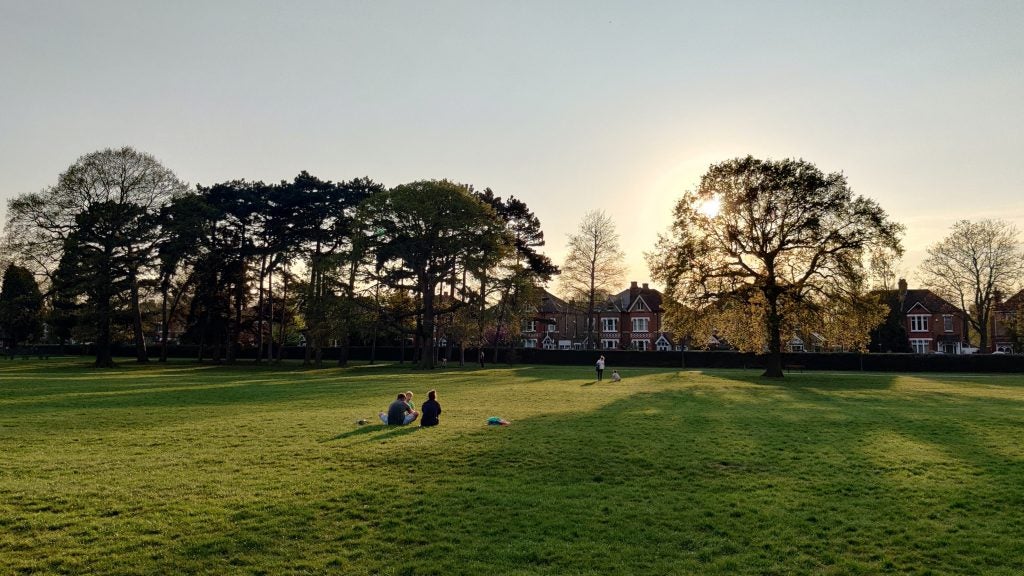
The 2x zoom isn’t great, but it is still useful for composition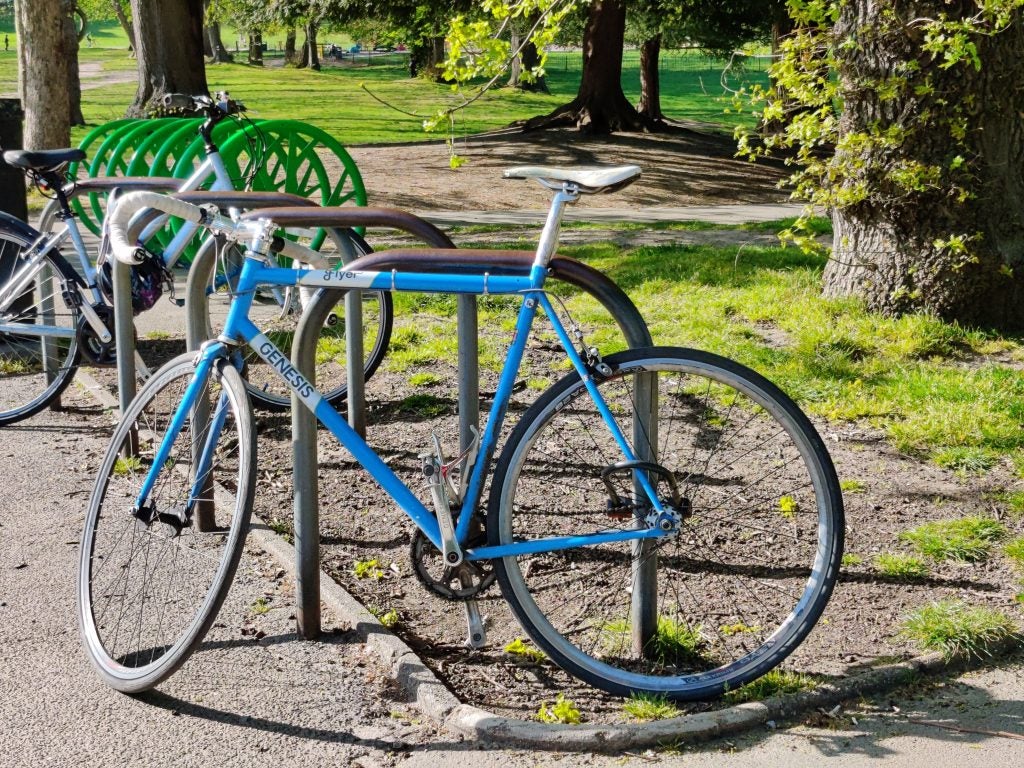
Our main camera has optical stabilisation too, a feature that once seemed essential for good low-light image quality, but now isn’t thanks to the rise of night modes based on advanced computational photography. There are still a few uses for it, though.
The OnePlus 8 appears to use OIS in its Super Stable mode, part of video capture. Keep it off, and the phone uses software stabilisation right up to its top 4K 60 frames per second capture mode. This in itself is quite impressive.
But switch Super Stable on and it, judging by my observations, uses both optical and software stabilisation for even better results. In some situations, anyway. While Super Stable does significantly increase the power of judder and shake reduction, it can also cause visible tremors, particularly in lower light.
Running or BMX’ing across a field? Choose Super Stable. But for a lot of handheld situations, standard software stabilisation can do the job perfectly well.
Video quality is decent, but there isn’t quite the detail leap from 1080p to 4K you’d see from a higher-end sensor, including the OnePlus 8 Pro. Its 4K video is significantly sharper.
Battery life – Fast charging, but fast draining
The OnePlus 8 has a 4300mAh battery, and the usual super-fast charging we expect from a OnePlus phone. You get from 0 to 50% in just over 20 minutes.
My experience with battery life has been mixed. Thanks to the Qualcomm Snapdragon 865, a recent and efficient chipset, charge loss while the phone is sitting in your pocket quietly listening out for notifications is minimal.
On a light day, the phone lasts to the end of the workday (say, 5:30pm) with up to 50% charge. However, the screen and modem do seem to be real battery sappers. The level drops like a stone when using the phone as a Wi-Fi hotspot outdoors, or when the ambient light level causes the OnePlus 8 to max out its display brightness.
For heavy use, there’s no real replacement for an XL-size battery, and the OnePlus 8’s is a Medium. This phone has a larger battery than the OnePlus 7T or OnePlus 7, but I don’t see a noticeable improvement over their “OK, but nothing too special” stamina.
The OnePlus 8 does not have the wireless charging of the OnePlus 8 Pro either. But the cheaper phone has to have a few cut corners somewhere.
Should you buy the OnePlus 8?
Before its launch, many were worried OnePlus would be derailed by 5G, forced to make its phones far more expensive and lose the original OnePlus appeal. The OnePlus 8 costs just slightly more than the OnePlus 7T. Crisis averted.
Already own a OnePlus 7T? You don’t need to upgrade, and the next OnePlus generation will likely have better cameras. They arguably get slightly worse this time around. However, if you want a quality phone and 5G at a sensible price, this is your best option until cheaper 5G modems appear.
How we test phones
We test every mobile phone we review thoroughly. We use industry standard tests to compare features properly and we use the phone as our main device over the review period. We’ll always tell you what we find and we never, ever, accept money to review a product.


